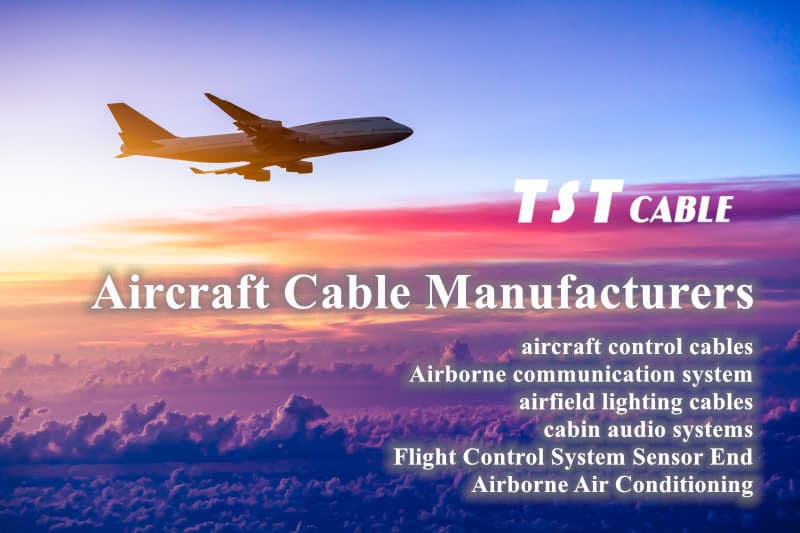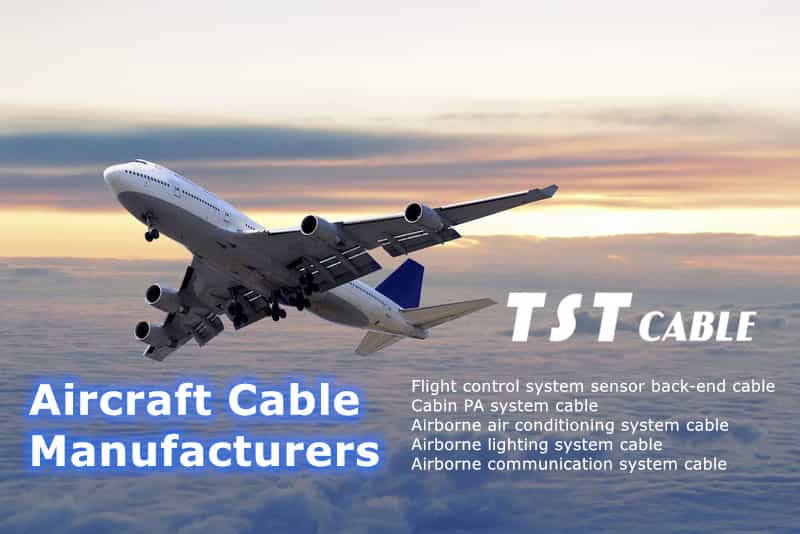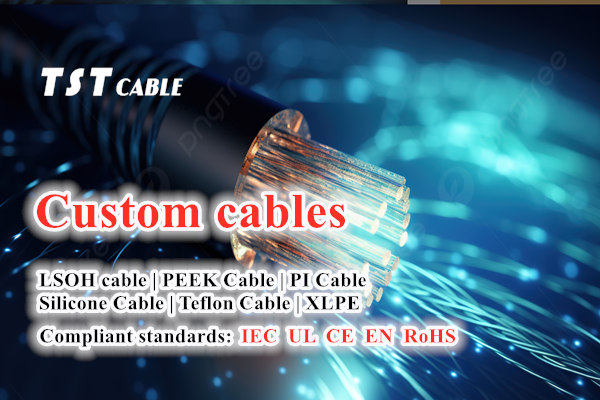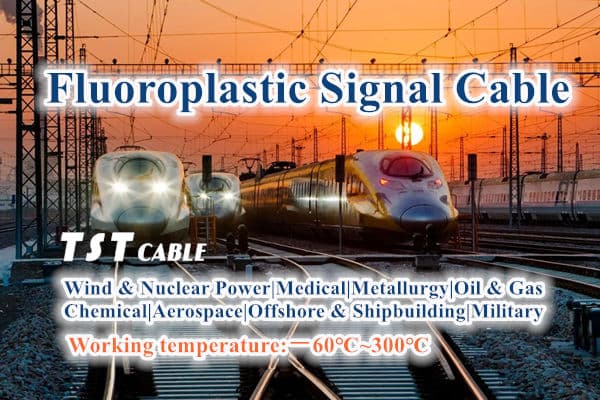LSZH cable (Low Smoke Zero Halogen) and PVC cable (Polyvinyl Chloride, polyvinyl chloride) are two common cable types. They have significant differences in material composition, safety performance, application fields, etc. Here are the main differences between these two types of cables:
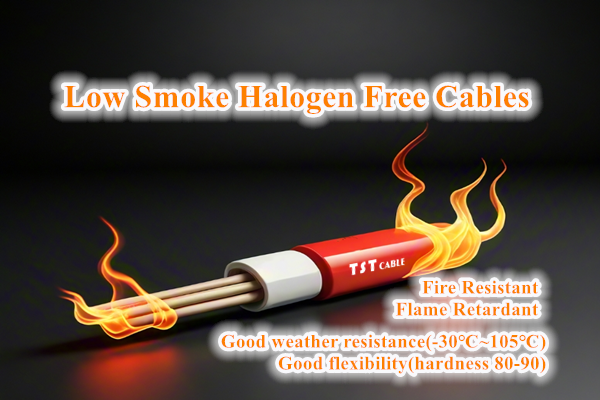
1. Material composition
LSZH cable: The sheath material of LSZH cable is usually made of a halogen-free polymer blend that releases very low amounts of smoke when burned and does not produce toxic gases. Common LSZH materials include polyolefins (such as polyethylene), thermoplastic elastomers (TPE), etc.
PVC cable: The sheath material of PVC cable is polyvinyl chloride, a synthetic plastic that contains chlorine. PVC is composed of large amounts of halogens, which are usually very stable but can separate and release toxic gases when burned. Especially hydrogen chloride (HCl). Regular PVC releases about 28% hydrogen chloride when burned, but there are currently no specific standards for PVC emissions. When this hydrogen chloride combines with water (either from a fire sprinkler system or moisture in your eyes, nose, and throat), it turns into hydrochloric acid. In comparison, LSZH cables release no more than 0.5% hydrogen chloride when exposed to fire and therefore pose a much smaller risk in the event of a fire.
2. Safety performance
LSZH cable: Due to its material characteristics, LSZH cable produces very little smoke when burned and does not release halide gas, which makes it safer in the event of a fire and suitable for densely populated areas or places with strict requirements for air quality. place.
PVC cable: PVC cable will produce a large amount of smoke and toxic gases when burned, which will cause great harm to human health and the environment. Therefore, the use of PVC cables is restricted in some places with high fire safety requirements.
3. Environmental friendliness
LSZH cable: Since LSZH cable does not contain halogen, it will not release halide gas when burned, which is environmentally friendly and easy to recycle.
PVC cables: PVC cables have a greater impact on the environment during production and disposal, especially during incineration, which will cause air pollution.
4. Cost
LSZH cable: Due to the particularity of LSZH material and the complexity of production technology, LSZH cable is usually more expensive than PVC cable.
PVC cable: PVC cable is relatively low-priced due to its low material cost and mature production technology.
5. Application areas
LSZH cable: LSZH cable is suitable for occasions with high safety performance requirements, such as public transportation facilities (subways, train stations, etc.), commercial buildings, hospitals, schools, data centers, etc.
PVC cable: Due to its low cost, PVC cable is more common in some general civil buildings that do not require high safety performance, such as residential buildings, factories, etc.
6. Installation and maintenance
LSZH cable: LSZH cable usually has better flexibility and bending properties for easy installation, but in some cases special installation skills may be required.
PVC cable: PVC cable is relatively stiff during installation due to its material characteristics, but it is relatively simple in terms of daily maintenance.
7. Regulatory requirements
LSZH cable: In many countries and regions, especially in Europe, due to the emphasis on fire safety and environmental protection, the use of LSZH cable is mandatory in some specific occasions.
PVC Cable: The use of PVC cable may be restricted in some areas, especially where building codes have strict regulations regarding fire safety.
8. Maintenance and Durability
LSZH cables: LSZH cables generally have better aging resistance, which means they can maintain better mechanical and electrical properties over long-term use. In addition, since the LSZH material itself has certain flame retardancy, the risk of cable damage during maintenance is low.
PVC cable: Although PVC cable also has a certain degree of durability, because it is easy to soften and deform under high temperatures, and long-term exposure to ultraviolet rays can cause aging, more attention is needed in maintenance, especially when used outdoors.
9. Environmental adaptability
LSZH cable: LSZH cable can be used in a wide temperature range due to its material properties and is suitable for working in extreme temperature environments. In addition, LSZH materials also have certain chemical corrosion resistance and are suitable for special environments such as chemical plants.
PVC Cables: While PVC cables perform well under general environmental conditions, their performance may be affected under extreme temperature conditions (especially high temperatures) or in chemically aggressive environments.
10. Convenience of construction
LSZH cables: LSZH cables generally have better flexibility and bending properties, which makes them easier to handle during construction. However, due to the special nature of LSZH materials, special tools are sometimes required for cutting and jointing.
PVC cable: PVC cable is relatively stiff, but usually does not require special tools during installation, so it has certain advantages in terms of construction convenience.
11. Application extensions
LSZH cable: As people become more aware of health and environment, the application scope of LSZH cable is constantly expanding. In addition to being widely used in electrical wiring in buildings, LSZH cables have also begun to be used in automobiles, ships, rail transit and other fields, especially in those vehicles with higher safety requirements.
PVC cable: Although PVC cable has limitations in some aspects, it is still widely used in various electrical equipment and household electrical wiring due to its low cost and easy processing. In some situations that do not require particularly strict fire protection and environmental protection requirements, PVC cables are still the first choice.
12. TST CABLES LSZH cable application case analysis
public transport facilities
Aviation, high-speed rail, train, light rail, subway stations: In public transportation hub stations, considering the characteristics of densely populated and closed spaces, LSZH cables are usually selected to ensure rapid evacuation of people in emergencies and reduce the risk of fires Harmful gases produced.
commercial building
Office buildings: For high-rise office buildings, the use of LSZH cables can effectively reduce the smoke concentration when a fire occurs and protect the lives of employees. In addition, the environmental protection characteristics of LSZH cables also meet the green building standards of modern office environments.
chemical plant
Chemical production facilities: In chemical plants, due to the presence of a variety of corrosive gases and chemicals, the use of LSZH cables can improve the corrosion resistance of the cables and reduce safety hazards caused by cable aging.
TST CABLES LSZH cables are widely used in modern buildings and public places because of their low smoke, halogen-free, and environmentally friendly characteristics. They have obvious advantages in situations with high safety and environmental protection requirements. Although PVC cables are slightly inferior in some performances, due to their cost advantages, they still occupy an important position in some applications that do not have high safety requirements. The choice of which type of cable to use ultimately depends on factors such as specific application needs, safety requirements, cost budget, and local regulatory requirements.
Also available in:
English


